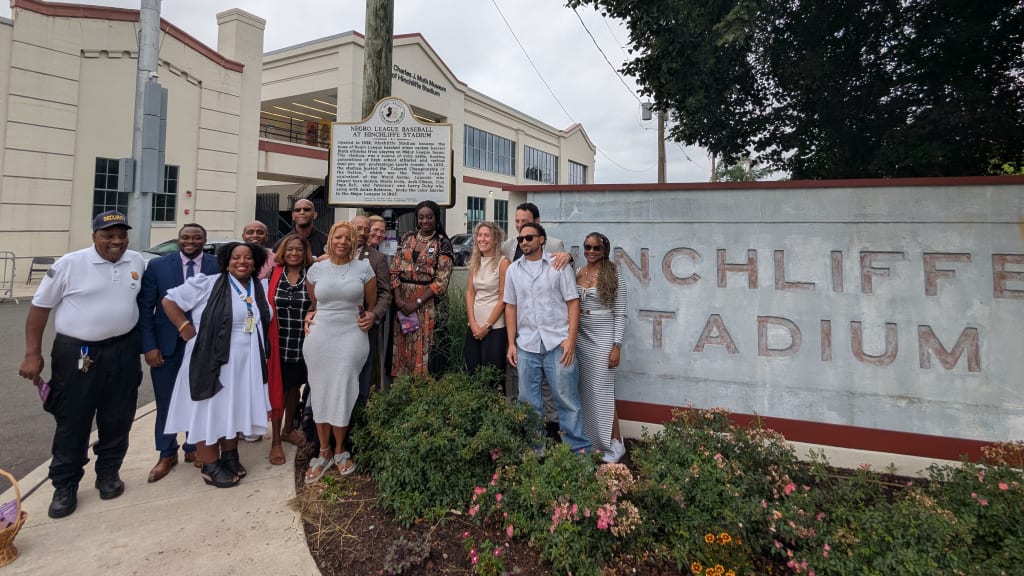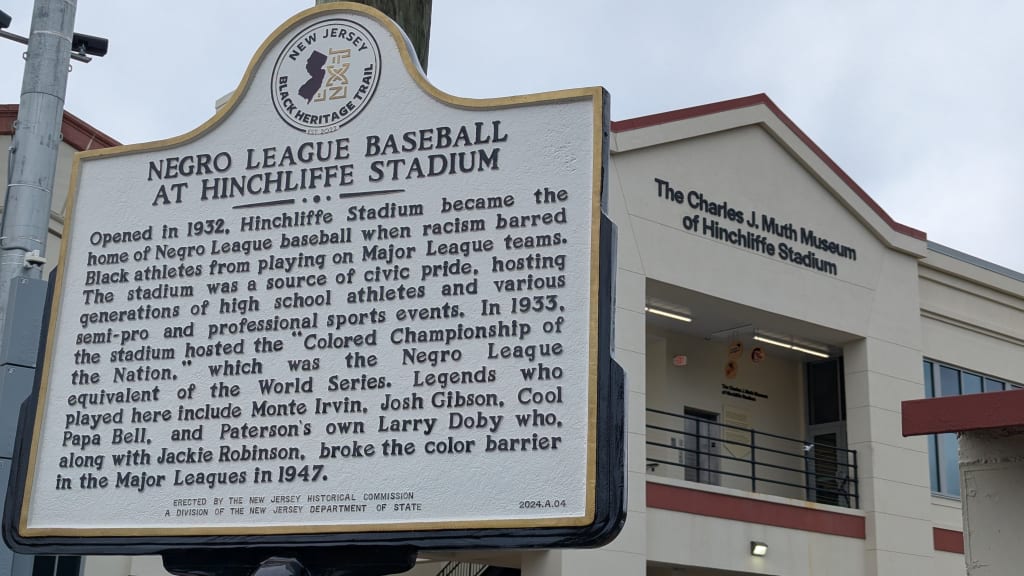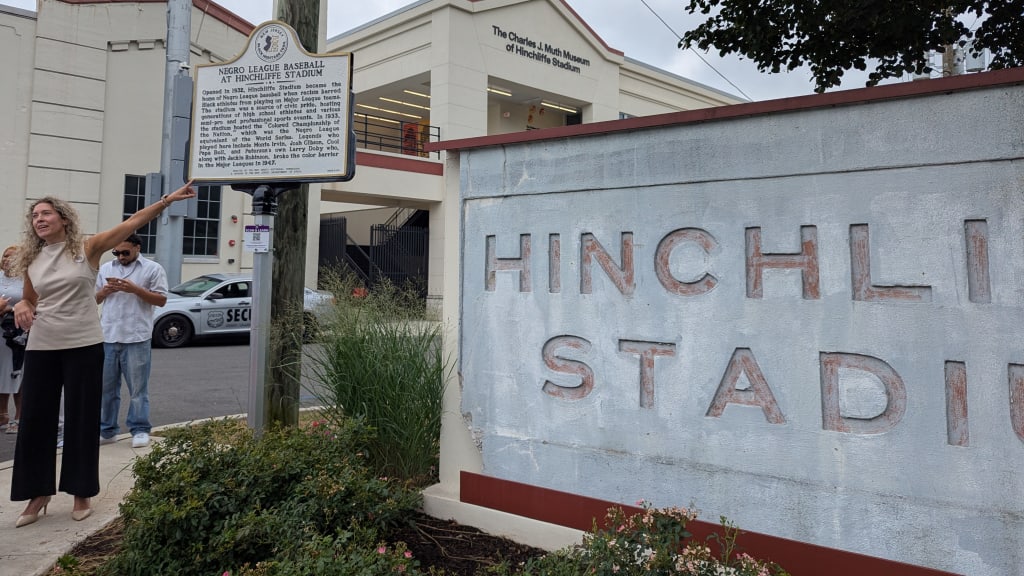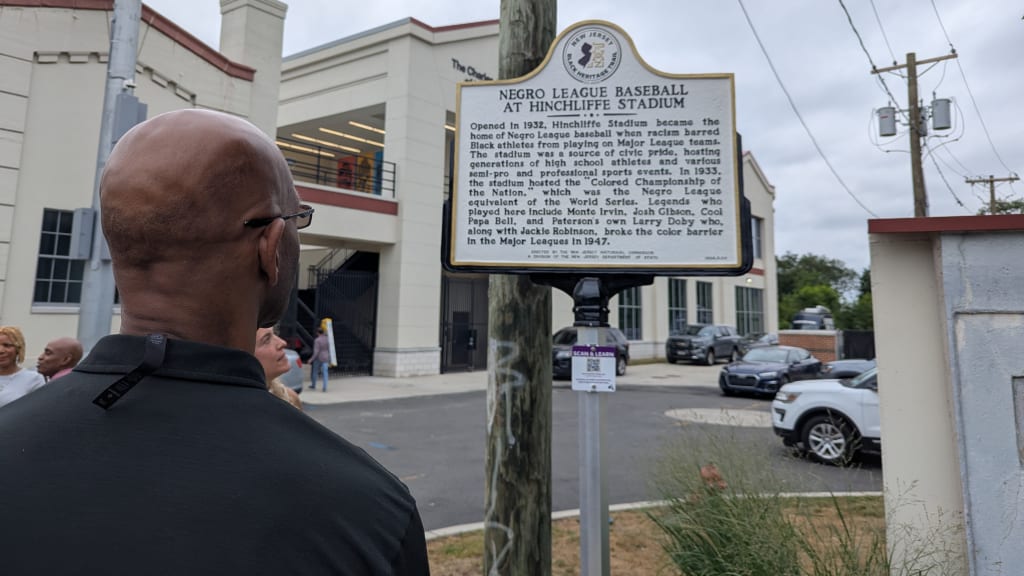
PATERSON, N.J. – Like a decorated ballplayer, Hinchliffe Stadium continues to pile up accolades.
Already on the National Register of Historic Places and part of the Paterson Great Falls National Historical Park, the historic stadium is now formally on the New Jersey Black Heritage Trail after the unveiling on Friday of a marker outside the Charles J. Muth Museum of Hinchliffe Stadium.
“When we bring students to this site, the first question I ask them is what makes a place historic,” Jessica Cameron Bush, director of the museum, said over the din of the Great Falls, some 300 feet away. “Answering that question for some people is just like, ‘Well, it's old, does that make it historic?’ Well, no, to make something historic it has to have a significant and lasting impact on our collective past. Places like Hinchliffe Stadium do that.”
Bush worked with Dave Kaplan, the founding director of the nearby Yogi Berra Museum and Learning Center, on the application to place Hinchliffe on the heritage trail. The two of them wrote the text on the marker, which distills the stadium’s 93-year-old history into 97 words and cites Hall of Famers Monte Irvin, Josh Gibson, Cool Papa Bell and Paterson native Larry Doby as having played on the field here.

“The easy part [of the application process] was that so many people had already done the research,” Bush said. “That part of the application was proven, the historic significance [of the site], and it was already done for us.”
The New Jersey Black Heritage Trail was signed into law by Gov. Phil Murphy in September 2022. The first 32 sites were announced last summer, with Hinchliffe Stadium among the initial locations chosen. There are now 52 sites – but Hinchliffe is only the second one to have its marker installed, following the Franklin Street School in Cape May. It is the only site on the trail with a direct connection to baseball.

“Whenever we celebrate Black History Month, very often, speakers say, ‘Black history is more than just a month,'” Paterson mayor Andre Sayegh said. “Today is proof positive that it is more than just a month, that it's every day.”
Located at 186 Maple St., the marker stands next to one of the original concrete panels with Hinchliffe Stadium’s name on it that was saved during the renovation. After Bush’s opening remarks and a few words from the mayor and other guests, Larry Doby Jr. climbed a stepladder to unveil the marker.

Steps away down a slight hill, the Passaic River cascades over basalt cliffs, forming the 77-foot high Great Falls. Visitors drawn to the falls will now be able to learn more about the history of the stadium – one of only a few structures still standing where Negro League games were played – and how it all ties in to local and national history.
“I believe that African-American history is a lens for us to understand humanity and the American journey,” said Noelle Lorraine Williams, director of New Jersey’s African American History Program and the Black Heritage Trail. “It gives the opportunity for people to be inspired by these stories and to learn the different ways democracy and community have been built.”
The stadium’s baseball history played a big part in its revival after being abandoned for nearly 30 years, but its impact reaches far beyond the baselines.
“The stadium is a local landmark, and anybody who lives anywhere near Paterson knows about Hinchliffe Stadium,” Bush said. “[They] may not know the history of it, but they know the place exists – or existed or might still exist. But to have it be something that's a statewide recognition, people now from all over all parts of the state are going to know about the stadium.”
